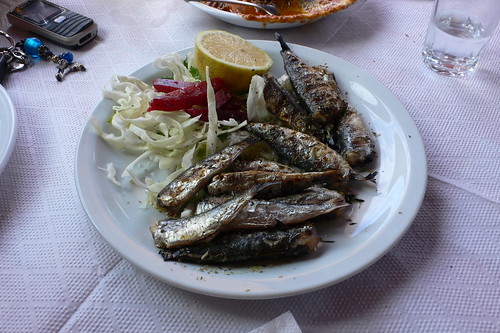I realize that for most of you a trip to the supermarket involves racing around as fast as possible while hoping that you don’t crash into another cart and/or run out of things to bribe your children with. (Yes, I have those experiences too). As a dietitian working in a grocery store three days per week, I have the fortunate opportunity to spend A LOT of time spotting new foods on shelves and studying trends in our food industry.
One of the fastest growing areas is unquestionably in the area of functional foods. These are primarily foods that have been modified (“made better”) to be more beneficial. Orange juice that has been fortified with calcium is a fine example, as calcium wouldn’t naturally be found in it but clearly enhances the product for individuals that don’t or can’t consume dairy-based, calcium-rich foods. Of course, the definition can also take a more familiar meaning; the many natural benefits of fruits, vegetables, nuts and fish come to mind. As the Academy of Nutrition and Dietetics reminds us, “whole foods and fortified, enriched or enhanced foods have a potentially beneficial effect on health when consumed as part of a varied diet on a regular basis at effective levels.”
I like to take a slightly different approach to understanding the role that functional foods can play. In our “no-time-for-eating-well” approach to nutrition (an approach I take issue with…a blog post for another day), functional foods can make our eating more efficient. In many cases you can get several important nutrients in one food. Many cereals, for example, can give you the same vitamin and minerals found in an average multi-vitamin, often with added fiber and protein.
The desire to increase omega fat intake (my own and my family’s) led me to examine the offerings available that provide this essential, “must-have” fat. Like many families, we often fall short of the dietary guideline to have fish at least twice a week. Omega-fat infused cranberries and cereal and eggs fortified with these essential fats are examples of everyday foods I found.

Let’s take a moment to go back to Nutrition 101. Why omega-3 fatty acids? They are essential for us and key to reducing risk of heart disease and cancer, for neurological development in newborns and improving outcomes in several other health conditions such as arthritis. We cannot make omega-3 fatty acids on our own and therefore we must consume them through sources such as salmon, tuna and mackerel, which provide the fat as DHA and EPA (the forms believed to be most beneficial). There are also several sources of another form (ALA), which can be converted in our bodies to DHA and EPA, though this isn’t as effective as consuming DHA directly. Sources of ALA include flaxseed oil/ground flaxseed, canola oil, walnuts/walnut oil and pumpkin seeds.
A daily intake of 1.3 to 2.7 grams ALA is recommended, according to the Institute of Medicine. As for DHA/EPA, the goal is to consume fish twice weekly, which translates to a daily intake of 1,250 mg per day (according to the University of Maryland Medical Center). I strongly advise anyone who is starting a supplement to speak with the doctor first about potential risk. When it comes to feeding my family and ensuring that we are benefiting from consuming omega-3 fats, I aim to get in a combination of DHA and ALA.
With the goal of shopping for foods rich in omega fats and the Guiding Stars to navigate me toward the most healthful options available, I set out to increase my family’s intake of these essential fats. Here is what I found…
Total Plus Omega: 160 mg of ALA per 1 cup (200 calorie) serving, which is 10% of our daily need (3 Guiding Stars)
Nature’s Place Omega-3 Fortified Dried Cranberries: 180 mg of ALA per ¼ cup (91 calorie) serving (2 Guiding Stars)
Kashi Oatmeal Raisin Flax Soft-Baked Cookies: 600 mg ALA per cookie (1 Guiding Star)
Walnuts: 2.5 g ALA per 1 oz serving (3 Guiding Stars)
Horizon Milk with DHA: 32 mg DHA per oz serving (source= algae), which is approximately 20% of daily need
Silk Plain Soy Milk with Calcium and DHA: 32 mg DHA per 8 oz serving (vegetarian source, Life’s DHA brand)
To learn more about functional foods, join us on Thursday, March 8 at 2:00 PM ET for a free, one-hour webinar. Learn More & Register